Following on from my recent posts comparing the new draft GCSE maths specifications, and the extra information about the 1-9 grading system, I have decided to complete the “2017 GCSE Maths Trilogy” with a look at some of the questions that have appeared on the sample assessment material from Edexcel, AQA and OCR.
Just to try to add a bit of drama to the occasion, I have selected my Top 10 questions from the Higher Tier. So make yourself a nice cup of tea, get a pencil at the ready, and switch your brains on, as there are some pretty tough ones in here 🙂
10. Sequences – AQA
As I mentioned in my previous post, AQA have decided to open up each of their papers with multiple choice questions, and have them scattered throughout the paper. Andrew Taylor, the Head of Maths at AQA, explained that he felt multiple choice questions were an excellent way to test knowledge and reveal misconceptions without having to use up a lot of marks. It will be no surprise to learn that I am very happy about this move (I have been know to use the odd carefully designed multiple choice question, or two, myself). I believe it will challenge students, but also ease them into the paper.
9. Kinematics – Edexcel
Next up we have a question that tests some content brand new to the GCSE – the wonderful world of kinematics and the SUVAT equation. Now, at A Level, I tend to avoid Mechanics like the plague, favouring a lovely bit of Statistics or Decision instead, so I am certainly going to have to put a bit of time into preparing for this component of the course. And given that Probability and Statistics will only represent 15% of the Higher content (see bottom of previous post), does this represent a shift away from good old stats towards a more physics influenced maths curriculum? I hope not! :-/
8. Proof – OCR
Proof questions in the current GCSE don’t tend to be too tricky. It is usually a case of expanding some brackets, collecting like terms together, and then taking out a common factor in order to show an expression is always, say, a multiple of 3. By the looks of this question, and others like it, proof is going to get quite a bit more complex. And that isn’t a bad thing as, in my opinion, proof is one of the most important components of mathematics.
7. Sketching Quadratics – Edexcel
Another new requirement of the GCSE is for students to be aware that the completed square form of a quadratic expression can reveal the minimum/maximum point of the graph of that expression. I am happy with this, as it gives GCSE students an insight into why indeed we bother with completing the square, and sets them nicely up for the co-ordinate geometry infused Core 1 AS module. But how about part b) of the question above? Tricky!
6. Functions – AQA
Yet another new area to be tested at Higher Tier is functions, compound functions, and their inverse. Now, given that this is currently a Core 3 topic with most exam boards, this represents quite a shift. Again, I have no real issue with this, but it does beg the question as to how the A Levels might change in the future given that their content is being eaten up by GCSE?
5. Locus – Edexcel
I nearly cried when I saw this question. As my students will happily tell you, I am ridiculously spatially unaware. I can’t picture reflections or rotations at the best of times, and have been known to struggle a fair bit with symmetry. So, imagine my horror when I saw this question! I am also thinking how I would go about teaching this, and how there is potential for some nice simple technology to track the loci of points as they move about in 2D space. Oh, and this same question also appears on the Foundation Tier! Once again, some work for Mr Barton to learn this one!
4. Statistics – OCR
I love a bit of statistics, and despite the aforementioned decrease in its prevalence, I am very pleased if the questions appear in the same vein as this. Questions that require students to make statistical comparisons are some of the worst answered on the current GCSE, and they often only tend to involve a bit of chat about the median and interquartile range of a couple of box plots. The above question looks far more challenging, and indeed far more relevant to skills students are likely to require in the “real world”.
3. Co-ordinate Geometry – AQA
I have mentioned before what a big fan I am of AQA’s Level 2 Certificate in Further Mathematics, and questions like the above are fairly common in that qualification. I like them because they challenge students, combine different areas of mathematics, and are fantastic preparation for what they will encounter at AS level. For those reasons, they are a welcome addition to GCSE, but they do raise my fears about the future of my beloved Further Maths!
2. The Race – AQA
What a great question! Again, as previously mentioned, the old QWC questions will disappear, but if they are to be replaced by things like this then students’ ability to communicate clearly, coherently and concisely will certainly be put to the test. I can already hear the student protests around the country when they are asked to write a paragraph – “sir, this is Maths, not English”. But maths without communication is not maths at all, so I am all in favour of it. But what a nightmare to mark these will be!
1. Formula – Edexcel
It was a tough choice to select my number 1 question, but after much consideration I have opted for this classic. I had to have a good think how to approach this question myself, and when I showed it to two of my colleagues they approached it in completely different ways to me (a third colleague walked out of the room saying she was looking for a new career, but that is another story). There is no specific guidance or structure, no mention of rearranging the formula, and the inequality adds an extra degree of complexity. If students make it to the end of one of these papers, this is what is in store for them!
So, there you go – a quick look at some of the questions from the sample assessment materials. Now, I have to say that many of the questions look the same is we currently have, and all of these have to be approved by Ofqual, but there is no doubt in my mind that there is a significant change coming, and that both tiers have been made a lot more challenging. Now the question of how best to prepare our current Year 8s for this…

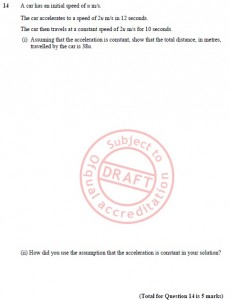
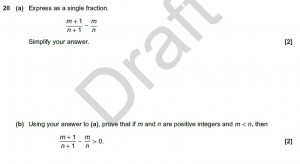
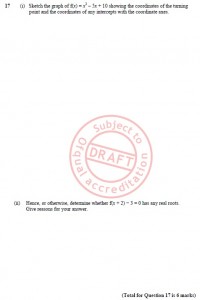
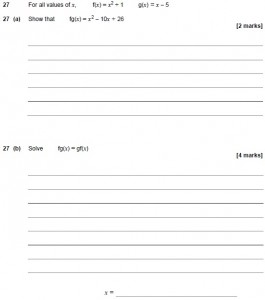
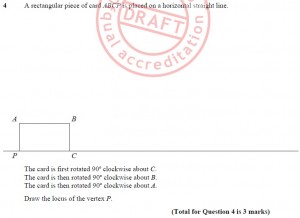
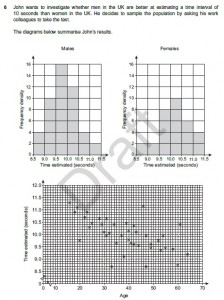
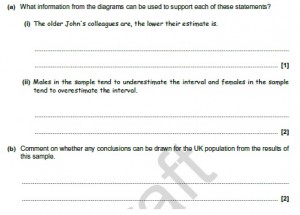
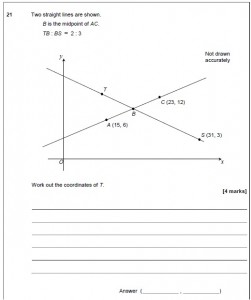
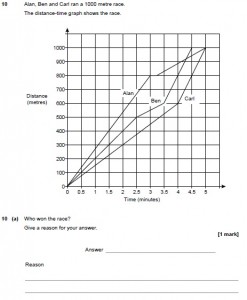
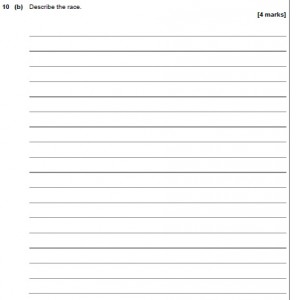
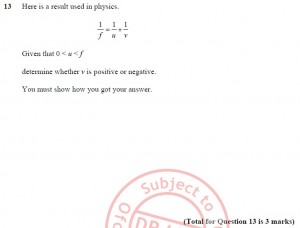
I’m stuck on the functions question b) fg(x)=gf(x).. Do you do fg(x) then do gf(x), make them equal to eachother, move all to one side of the equals sign (giving a quadratic expression) then factorise to give two answers? or am i wrong?
fg(x) = x^2 -10x+26 (proven in a) )
gf(x) = x^2 -4 (done similarly to a) )
So x^2 -10x+26 = x^2 -4
=> -10x +26 = -4
=> x=3
Thanks for sharing these questions. I have been revising for my GCSE using Maths GCSE Edexcel past papers, and I do not know where to start. I will start looking for these questions on the papers that I have and start my revision there.